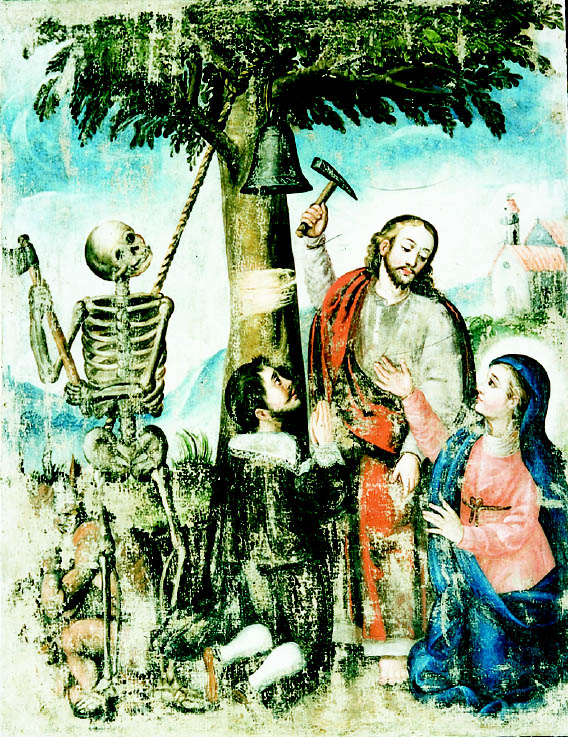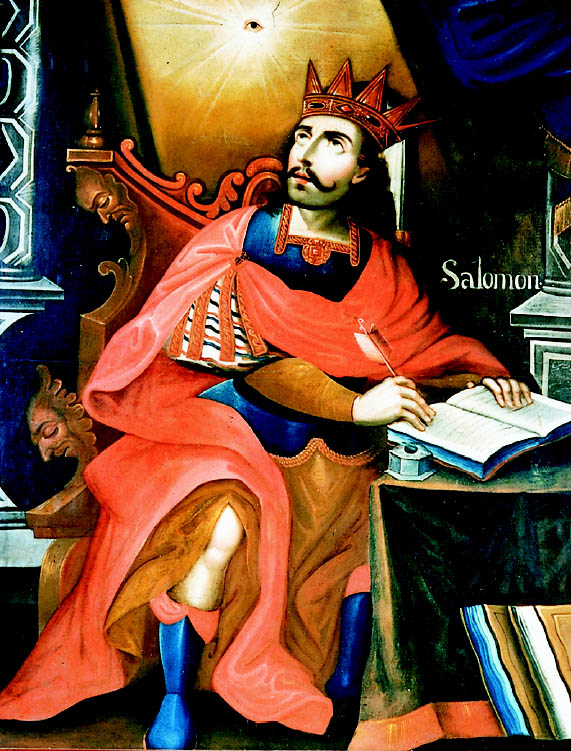GREEN, YELLOW, AND RED PIGMENTS IN SOUTH AMERICAN PAINTING, 1610–1780
ALICIA SELDES, JOS� E. BURUC�A, GABRIELA SIRACUSANO, MARTA S. MAIER, & GONZALO E. ABAD
5 HISTORICAL CONCLUSIONS: COLOR, PATRONAGE, AND MARKET
When trying to understand how painters from different schools and regions used available pigments, we are puzzled at first glance by the variety of the results obtained. Such differences stem not only from the skills, knowledge, and experience of each artist, but also from the economic value of the works involved, which was preestablished by contract, and the social conditions in which they were created. There is, on the one hand, the variegated palette and subtlety in color use of Pisarro's workshop in the Andean plateau, which constructs volumes, details textures, and manages to obtain flushes in carnations through the use of soft, thin brushes. On the other hand, there is Marcos Zapata's work, showing a limited palette and resorting to thick brush strokes that define extended areas of flat color (see, for example, the bulging, rigid cloaks of the important figures in the series of Humahuaca paintings (1.3.2 [fig. 5], 3.1.9, 3.4.3, and 3.5.2). Stratigraphic studies showed a significant difference in the quality of the pigments used in these two workshops: unevenly bound pigments of irregular, coarse grain, untidy mixtures, and ill-defined layers in Zapata's samples; neat layers of well-ground, well-bound pigments, homogeneous mixtures, valuable pigments, and velature in Mateo's works. Surprisingly, Pisarro's technique—especially the elaborate work on the brocaded cloak of the Pomata Virgin (painting 3.1.2), which has three superimposed layers of vermilion, lead yellow, and white lead—is very similar to the technique revealed in stratigraphic cross sections from Virgin with Baby Jesus (painting 3.1.1) that crowns Yavi's retable and is probably of Flemish origin. The presence of thin, neatly separated layers of finely ground colors (which may result from thorough drying between one layer and the next one) and the final velatura in translucent white suggest that Mateo Pisarro might have carefully studied this painting or some other European paintings from the Flemish region, which he might have seen when he visited P�rez Holgu�n's workshop at Potos�.
Fig. 3.
Attributed to Mateo Pisarro, Coronation of the Virgin by the Holy Trinity, ca. 1690, oil on canvas, 78.5 � 83.0 cm, parich church, Yavi, Jujuy Province, Argentina
 |
Fig. 4.
Anonymous from Cuzco, The Unfailing Hour, first half of the 18th century, oil on canvas, 99.0 � 79.0 cm, parish church, Yavi, Jujuy Province, Argentina
 |
Even though Zapata was a highly renowned master and was commissioned for fine works, as was the case of the series for the cathedral entitled Litanies of the Virgin, his hastily and carelessly made canvases are characteristic of the large-scale production at the workshops of Cuzco during the 18th century. The lack of local workshops, added to the prestige of Cuzcan painting, brought about a steadily increasing artistic traffic toward the south of the viceroyalty, to satisfy the great demand for religious images required to evangelize new settlements and towns. There was an urgent need to speed production and reduce costs, which limited the colors in the palette, restricted the number of superimposed layers of paint, and resulted in rather coarse and unrefined color mixing.
The dedication of Pisarro to achieving a particular shade in the rompimiento de gloria (literally, “the break of glory”) behind sacred figures, the smooth gradation of his haloes, his pentimenti on the Marian symbols in several of his paintings, and his unexpected skill in drawing grisailles in the monstrance of the Immaculate Conception of Yavi and in the book exhibited by Saint Ignatius at Uqu�a (where he proudly appended his signature once and for all)—all evidence an artist who handles color with a knowledge deeper than that of his contemporaries. Very little is known about Pisarro's technical training and less about his intellectual education, although it may be ventured that he knew Pacheco's treatise. Schenone (Buruc�a et al. 2000) has concluded that, during the last decade of the 17th century and the first years of the 18th, Pisarro served the landowner and encomendero Juan Jos� Campero y Herrera, later marquis of Valle de Tojo. Charitable deeds and the construction and ornamentation of seven churches in the lands of Yavi-Tojo, as well as the prosperity of the encomienda and the concern of the marquis for the welfare of the Indians entrusted to him, reinforce his image as a charitable “great blessed prince,” famous for his patronage of the arts. In his court, he supported a workshop headed by Pisarro that created beautiful images for the churches of the marquisate. Among the possessions inventoried when he died at his Yavi estate were a “small box of approximately half a yard containing 14 papers with glass beads” and a “box of crystal glass which had come from Spain.” Among those beads, perhaps, were the blue beads Mateo Pisarro might have used to make his “smalte.” “A small bundle of colors for painting” is also mentioned, as well as a box of medium size containing “Chilean clay and small earthenware pots from Italy” (Inventario 1991, 425). The presence of such objects might support the hypothesis that there was a painting workshop at Yavi, for which Campero himself might have provided the necessary materials. Moreover, the discovery of a few works by Mateo Pisarro in chapels at Jujuy that did not belong to Campero's encomienda and the concentration of artistic objects at Tarija, on the royal highway and the closest to Potos� of Campero's estates, suggest that the marquis was also dedicated to trade in paintings.
Fig. 5.
Marcos Zapata, King Solomon, 1764, oil on canvas, 207.0 � 166.0 cm, cathedral, Humahuaca, Jujuy Province, Argentina
 |
The authors wish to draw attention to the unusual circumstances of a painter, Mateo Pisarro, living in the periphery of the American colonial empire, who felt such an urge to solve the aesthetic problems posed by the appropriation and re-creation of European models that reached him in black and white through engravings. It is not unlikely that he might have been spurred by the demands of the man who commissioned his works, his employer, Juan Jos� Campero. It should be noticed that we do not have any specific example of iconographic derivation from European engravings to Pisarro's paintings, but we do know that this method was the most widespread and universally accepted among Spanish American colonial artists.
Finally, the authors wish to emphasize the relevance of interdisciplinary efforts such as the present one, since using a methodology derived from cultural history, based on heterogeneous sources such as images, chemical tests, and written documents, chemistry, and history of art together bring us closer to discovering the working methods and practices of South American artists of the colonial period.
|


